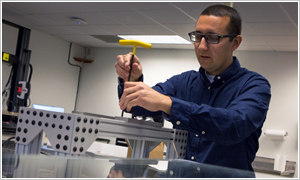Test Method Validation and Test Method Development
Engineering Services

Testing that is required to develop a medical device, but not currently prescribed in testing standards can be challenging during device development. In the absence of standardized test methods, it is up to the medical device developer to define and develop the testing methodology that will appropriately challenge the device. We have a history of robust test method development and validation. Our president had the vision to gain ISO/IEC 17025 accreditation in 2004, long before it became industry standard. When we took on this process of validating all of our methods we appreciated the value and control it gave us. The idea that you can understand the uncertainty in each measurement, demonstrate operator competence, and have monitoring processes in place was novel at the time, but has become second nature. Many of the tests that we have developed through the years have made their way into testing standards and guides. Today we commonly validate methods for our client’s use and can do this relatively quickly. We understand how important a good test can be to the medical device development process. We are actively involved in ASTM and ISO standards development and chair several of these efforts. We can help you identify an appropriate test standard or develop a new testing methodology to fit your needs.
The CFR, referenced below lists the requirements for verification and validation, and ISO/IEC 17025:2017 goes further to prescribe how we take these measurements, what control we have over competency and equipment and how we ensure these measurements will be used going forward.
(f) Design verification. Each manufacturer shall establish and maintain procedures for verifying the device design. Design verification shall confirm that the design output meets the design input requirements. The results of the design verification, including identification of the design, method(s), the date, and the individual(s) performing the verification, shall be documented in the DHF.
(g) Design validation. Each manufacturer shall establish and maintain procedures for validating the device design. Design validation shall be performed under defined operating conditions on initial production units, lots, or batches, or their equivalents. Design validation shall ensure that devices conform to defined user needs and intended uses and shall include testing of production units under actual or simulated use conditions. Design validation shall include software validation and risk analysis, where appropriate. The results of the design validation, including identification of the design, method(s), the date, and the individual(s) performing the validation, shall be documented in the DHF.
Accreditation
- ISO/IEC 17025:2017 Accredited Methods
Key Activities
Test Method Validation, Verification and Validation, Measurement Uncertainty, Accredited Methods
OUR COMMITMENT
We are committed to consistently performing services with high quality, that deliver exceptional results, and add value to the client’s business.
For client surveys sent in 2024, we received ratings of 4.98/5 points (13).
